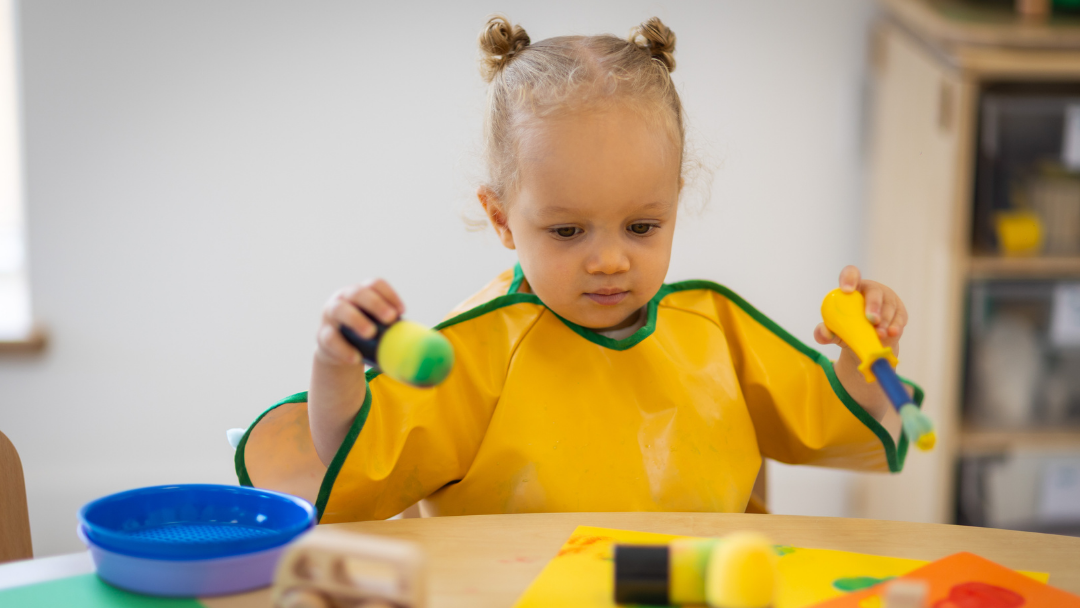Weaning Your Baby - Essential Tips for a Smooth Transition
Weaning is a significant milestone for both you and your baby. It marks the transition from a milk-only diet to one that includes solid foods. This blog post aims to provide essential information and tips to ensure a smooth weaning experience for you and your little one.
- Understanding the Basics of Weaning
- Different Approaches to Weaning
- Preparing for the Weaning Process
- Nutritional Needs During Weaning
- Enjoy the Process!
Understanding the Basics of Weaning
Weaning introduces your baby to a variety of textures and flavours. Understanding some fundamental aspects can help you make informed choices during this process. Research has found that 59% of first-time parents have found the decision to start weaning confusing, so don’t worry if you find the subject overwhelming!
What is Weaning?
Weaning refers to the gradual transition from breastfeeding or formula feeding to solid foods. This process is essential for developing your baby’s chewing and swallowing skills, as well as introducing them to the tastes and textures they will encounter later in life. It’s not just about nutrition; weaning also plays a crucial role in social development, as mealtimes can become a shared experience that fosters bonding and communication between you and your baby.
When is the Right Time to Start Weaning?
The recommended age to start weaning is around six months, as most babies at this age are developmentally ready to consume solids. By this time, they typically have good head and neck control and show interest in food. Introducing solids too early can lead to digestive issues, while waiting too long may hinder your child’s ability to accept new textures and flavours later on.
However, every baby is unique, and some may be ready a bit earlier or later. It’s important to consult with your health visitor or paediatrician if you’re unsure. They can provide personalised guidance based on your baby's growth and development, ensuring that you embark on this journey at the right time.
Signs Your Baby is Ready for Weaning
Before initiating weaning, look for signs indicating your baby’s readiness:
- Ability to sit up with minimal support.
- Loss of the tongue-thrust reflex (they can push food to the back of their mouth).
- Showing interest in your food, reaching out or opening their mouth when you eat.
- Increased appetite, such as wanting to be fed more frequently than usual.
In addition to these signs, you might also notice your baby mimicking chewing motions or becoming more curious about the food on your plate. This curiosity is a great indicator that they are ready to explore new tastes. Remember, the weaning process is not just about feeding; it’s an opportunity for your baby to engage with their environment, experiment with different foods, and develop their preferences. Allowing your child to participate in family meals can also enhance their social skills and make mealtimes more enjoyable for everyone.

Different Approaches to Weaning
There is no one-size-fits-all method for weaning. Various approaches can be adopted based on your and your baby's preferences.
Traditional Weaning
Traditional weaning involves introducing pureed or mashed foods gradually. It often starts with single ingredient purees like carrots, peas, or apples. You can then mix or add textures as your baby becomes accustomed to eating solids.
This method allows for controlled introductions, ensuring that allergies can be monitored more effectively.
Baby-led Weaning
Baby-led weaning encourages your baby to self-feed from the start. Instead of starting with purees, you offer them soft pieces of whole foods they can grasp and chew. This method promotes independence and can make mealtimes more enjoyable for your little one.
It also encourages your baby to explore different textures and flavours, further enhancing their palate.
Mixed Weaning
Mixed weaning combines both traditional and baby-led approaches. This method involves offering purees while also encouraging your baby to try finger foods. It can be a flexible option allowing parents to gauge what works best for their child.
This can ease the transition for babies who may initially struggle with solid foods. It allows parents to ensure they are meeting their child's nutritional needs while promoting self-feeding.

Preparing for the Weaning Process
Preparation is key when it comes to weaning. You’ll want to create an environment that is conducive to introducing solid foods.
Necessary Equipment for Weaning
To get started in the weaning journey, consider investing in some essential equipment:
- A high chair for safe sitting.
- Soft silicone spoons to prevent gagging.
- Storage containers for homemade purees.
- Dishware with suction bases to minimise mess.
Creating a Weaning-friendly Environment
Setting the scene for weaning can significantly impact the experience. Make mealtimes pleasant and stress-free. Choose a spot in your home that is safe and comfortable for both you and your baby.
Having family meals together can foster a positive association with food and provide an excellent opportunity for learning as your baby observes you eating.
Preparing Yourself for the Transition
Weaning can also be a big adjustment for parents. Mentally preparing yourself for the process is crucial. Understand that it’s perfectly normal for your baby to be messy and take time to adjust to solid foods.
Maintain a positive attitude and be patient as your baby explores new foods and textures. Celebrate small victories, like when they manage to feed themselves or try a new food, to keep spirits high!

Nutritional Needs During Weaning
Your baby’s nutritional needs will change during the weaning process. It’s crucial to provide a balanced diet to support their growing needs.
Essential Nutrients for Your Weaning Baby
During weaning, focus on offering a variety of foods rich in:
- Iron: Found in fortified cereals, meats, and beans.
- Calcium: Important for healthy bones, found in dairy products or fortified alternatives.
- Vitamins: Fruits and vegetables are vital for immune support and overall health.
Foods to Avoid During Weaning
While introducing new foods, be cautious and avoid certain items:
- Honey: Avoid until after the first year due to the risk of botulism.
- Whole nuts: These can pose a choking hazard.
- Excess salt and sugar: These can overload your baby's developing system and create unhealthy habits.
Maintaining Hydration During Weaning
As you introduce solid foods, it’s also essential to ensure your baby remains hydrated. Breast milk or formula should still be offered, but you can begin to introduce small amounts of water around mealtime.
Observe your baby’s cues. If they appear thirsty, offer water in a sippy cup to encourage self-drinking.

Enjoy the Process!
Weaning your baby can be a rewarding experience with the right knowledge and preparation. Take your time, enjoy the process, and watch your little one graduate to the world of solid foods!
FAQ
Subscribe to our newsletter
Stay up to date with Fennies news






.png)



